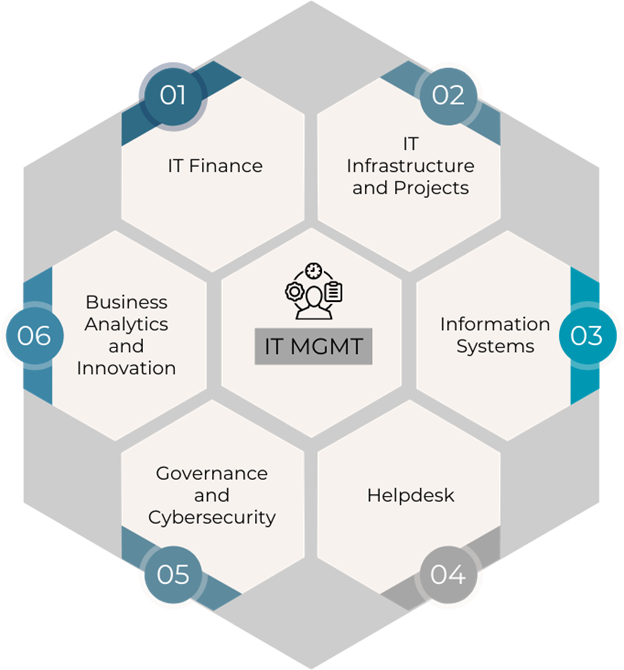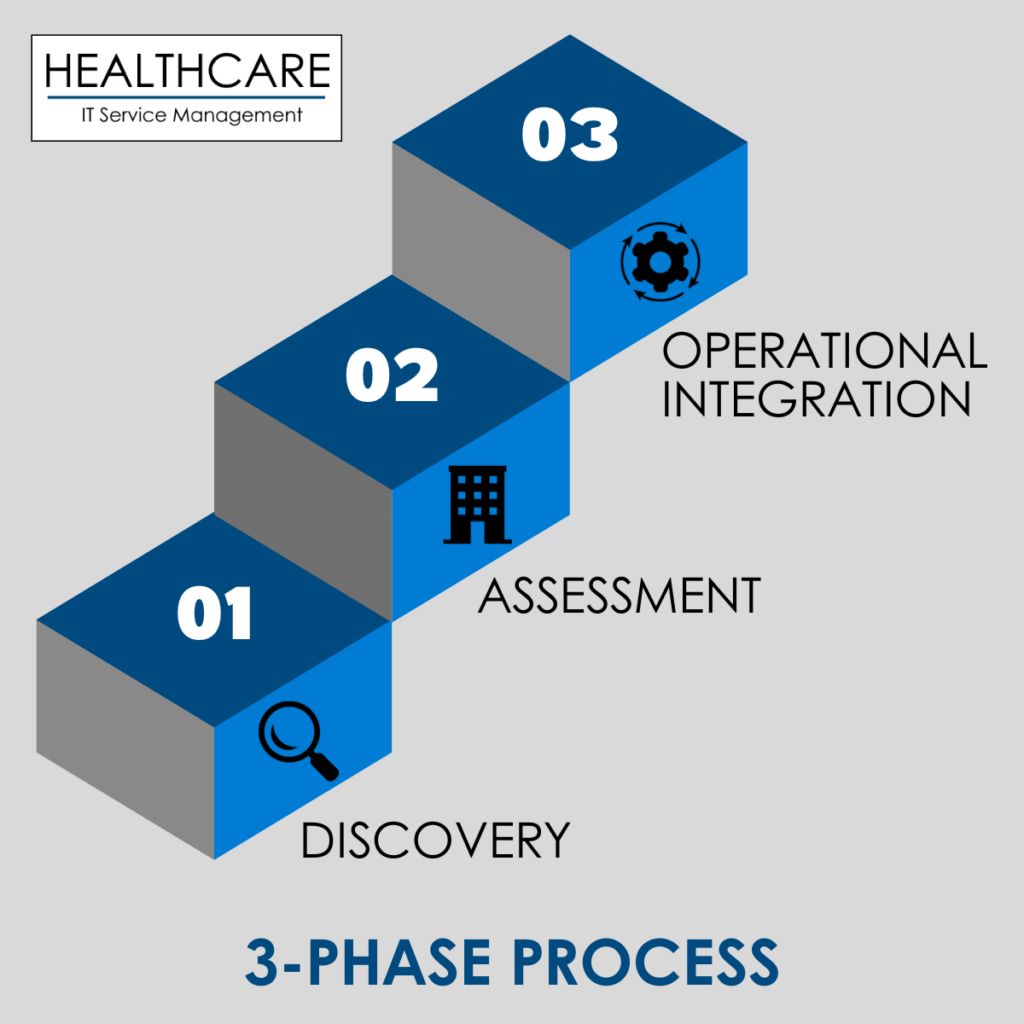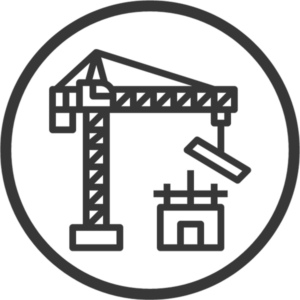Healthcare Managed IT Services and Packages
What is Information Technology Service Management?

ITSM is a customer-focused approach to IT service management, emphasizing continual improvement by utilizing a strategic approach.
ITSM is the integration of IT service management within an organization. This approach goes beyond traditional IT support, which is making sure an organization’s employees have access to the technologies they need. Instead, ITSM describes how all of an organization’s information technology functions are managed by an integrated team.
From auditing your existing systems, tools and staff to implementing a strategic solution, ITSM helps IT teams work together in a way that supports the bigger operational goals of the organization.
Introducing the HITSM Core Framework
HITSM (Healthcare ITSM) reviewed resources required for IT roles and developed an IT strategy to meet the organization’s technology goals.
Our objective is to continue to stay ahead of technology trends and training, bringing our clients continued innovation, service updates and modernization.
Healthcare ITSM will help your organization develop a strategy for each of the core roles in the ITSM Services Framework.
Proper Healthcare IT Service Management
Requires a Strategic Approach
It is the goal of Healthcare ITSM (HITSM) is to provide a smooth transition from Corporate Technology (current MSP) to Healthcare ITSM (HITSM) as the future Managed Service Provider (MSP).
In the transition, HITSM completed a multiphase process to enter into a newly acquired IT environment and take over its operations. The 3-phase process encompassed several tasks, from obtaining environment access and identifying “gaps” to documenting the environment for the incoming support team.
3-Phase Process
- Discovery: review the organization's current technology Standard Operating Procedures (SOP), vendors and leadership, and user concerns.
- Assessment: provide a remote and onsite review of the network, software, and hardware to develop a gap analysis. Gaps are differences between the current operations of an environment and established best practices, as well as informal customer processes versus formal activities documented in the account contract.
-
Operational Integration: the final transition phase. It is where the team is prepared to take over the account's environment.

How We Work
- Review findings with HITSM and create an action plan
- Install additional assessment tools and discuss the core roles
- Implement a ITSM strategy that fits your goals and budget
- Monitor, manage, maintain, grow and scale
Healthcare ITSM Packages

Start-Up and Acquisition Services

Ongoing Managed Service

Break Fix Services
Healthcare IT Service Management FAQs
What are the Benefits of ITSM?
- Improved Patient Care: ITSM ensures that healthcare systems are reliable and available when needed, enhancing patient care and safety.
- Cost Reduction: Streamlining IT processes and reducing downtime can lead to cost savings.
- Enhanced Efficiency: ITSM helps in resolving issues faster and more efficiently, reducing disruptions.
- Compliance: Ensures healthcare organizations meet regulatory requirements, reducing legal and financial risks.
- Risk Management: ITSM helps identify and mitigate IT-related risks in healthcare.
What are ITSM Processes?
ITSM processes are a set of structured activities aimed at managing IT services effectively. Common ITSM processes include:
- Incident Management: Handling and resolving incidents to minimize disruptions.
- Problem Management: Identifying and addressing the root causes of recurring issues.
- Change Management: Managing changes to IT systems while minimizing risks.
- Service Request Management: Handling user requests for IT services.
- Asset Management: Tracking and managing IT assets efficiently.
- Service Level Management: Defining and maintaining service levels to meet user expectations.
- Configuration Management: Managing the configuration of IT assets and services.
What are some examples of ITSM services?
In healthcare, ITSM services could include:
- Supporting healthcare providers with IT issues and requests.
- Ensuring the security and compliance of healthcare data systems.
- Implementing and managing telehealth and remote patient monitoring solutions.
- Maintaining and updating medical devices and equipment used in patient care.
How does ITSM Improve Efficiencies?
ITSM improves efficiencies by:
- Standardizing and automating IT processes.
- Implementing incident, problem, and change management procedures.
- Prioritizing and addressing issues more effectively.
- Providing a framework for monitoring and measuring performance.
- Streamlining communication and collaboration among IT teams.
What are ITSM Frameworks?
ITSM frameworks provide guidelines and best practices for implementing ITSM processes. In healthcare, commonly used ITSM frameworks include:
- ITIL (Information Technology Infrastructure Library): ITIL is a comprehensive framework that offers a set of practices for IT service management.
- COBIT (Control Objectives for Information and Related Technologies): COBIT focuses on governance and management of IT processes.
- HITRUST: HITRUST is specific to healthcare and focuses on information security and risk management.
Healthcare IT Made Easy
Connect with us for a completely free initial consultation to see how our services can benefit your healthcare organization.

Healthcare IT Resources
As consultants to healthcare organizations it’s important that we educate and share relevant news and resources to help our clients improve practices and the industry as a whole.
Hospital IT Setup Checklist
Healthcare facilities can offer better care when an IT setup is in place. Learn more about what is involved in this IT setup checklist.
Why Do I Have IT Burnout?
Healthcare IT professionals are under immense pressure. Here are some potential causes, their impact on patient care, and ways to mitigate their effects.
What Is a Network Consultant and 5 Major Reasons You Need One
Learn how network consultants optimize healthcare IT by boosting performance, enhancing security, ensuring scalability, and future-proofing your systems.



